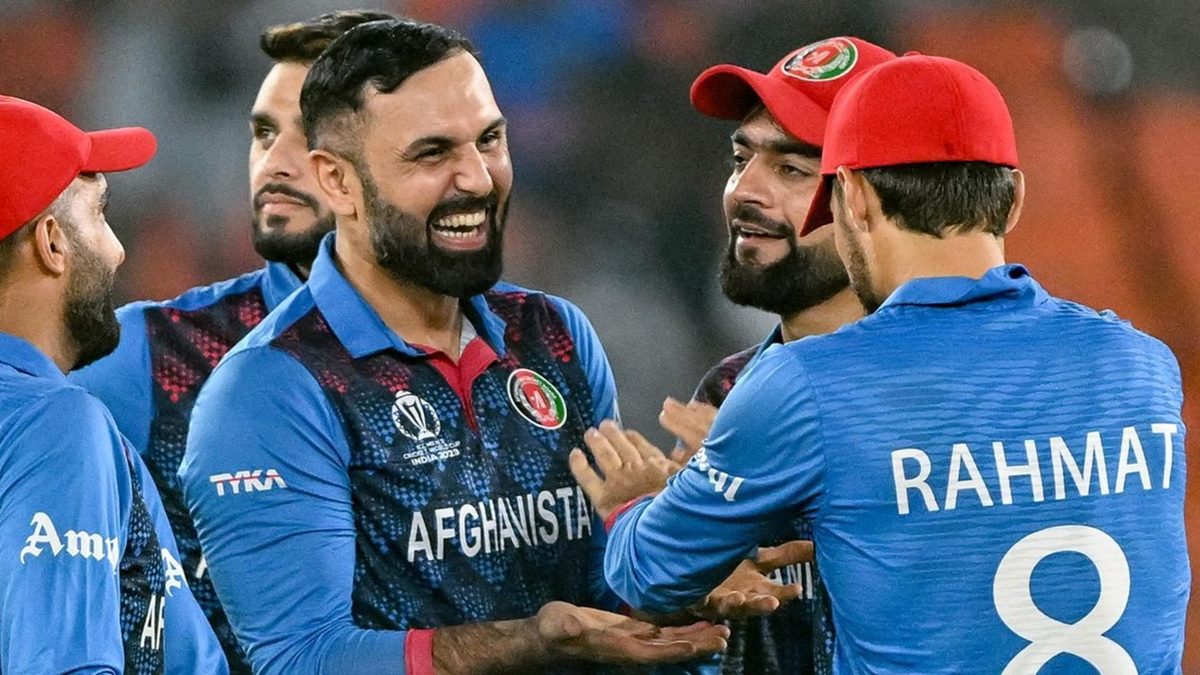
There are two ways to look at Afghanistan’s failure to make it to the semi-final at the 2023 World Cup.
To bet on the World Cup with our Match Centre Partners bet365 head here.
You can perceive this as a spike for a largely unheralded side at a global tournament – not a one-off win against a higher-ranked side but an effort that helped them leapfrog ‘major’ teams, like Zimbabwe in 1999 or Kenya in 2003.
Or you can see this as a unit of individuals who came into this World Cup with one win under their belt across two editions but finished as the story of the tournament, leaving fans with a sense of wanting.
At this World Cup, Afghanistan beat England, Pakistan, Sri Lanka – all of whom have the World Cup trophy in their cabinets – and the Netherlands. Yet, it was not just about the four wins alone.
At 83-1 after 15 overs after batting first, the Bangladesh match was Afghanistan’s to lose. Against Australia, they were felled by a batting performance beyond the scope of the most imaginative of storytellers. And from 116-6, they reached 244 before having South Africa at 182-5.
Even in the two matches where they were thoroughly outplayed, they were 184-3 against India and had New Zealand at 110-4 before caving in. Every time they took field at this World Cup, thus, Afghanistan had held the upper hand at some point.
Sometimes they prevailed. Sometimes they did not. But it was seldom a match without a fight. And when they strode out for their last league match, they had still semi-final hopes alive, albeit mathematically. Yet, more than what they did, this World Cup was about how they changed cricket’s perceptive about themselves.
Afghanistan had shown up in India with a reputation of being a team of world-class spinners and opening batters but little more.
Their spinners were familiar faces in franchise cricket around the world. Noor Ahmad bowls left-arm wrist-spin, the rarest type that exists; Mujeeb Ur Rahman’s bowling genre remains unclassifiable and he even opens bowling; Mohammed Nabi, the Grand Old Man of Afghan Cricket; and Rashid Khan, the face of sports in the nation for years now. Even the most casual cricket fan who tunes in just for the World Cup is aware of Rashid.
All of them are outstanding bowlers. This is an attack so formidable that the team management sometimes backs the full set, even at the World Cup.
Their openers, Rahmanullah Gurbaz and Ibrahim Zadran, arguably their best ever ODI batters – were a records-laden package as well. Against Australia, Ibrahim even scored their first ever World Cup hundred.
Yet, impressive as all that may sound, the reputation of Afghan cricket was restricted to them. By the time they left India, they – and cricket fans – had found new heroes.
Consider captain Hashmatullah Shahidi, who had hit 80 against India and was at the crease when Afghanistan hit the winning run in each of their three successful chases. Shahidi had arrived at the World Cup with an average of 32.27 and a strike rate of 67. At the tournament, the numbers read 51.67 and 73.
Four years ago, Rahmat Shah had made Afghanistan’s first ever Test hundred. Yet, at 30, he is yet to play a T20 International, and perhaps never will, given his T20 strike rate of 107. But here, he averaged 40 and struck at 76, superior numbers to his pre-World Cup 36.32 and 71. Neither Shahidi nor Rahmat can destroy opposition attacks, but they assure solidity if the Gurbaz-Ibrahim stand does not come off as expected.
Yet, neither of them was Afghanistan’s biggest story of the World Cup. Only 23, Azmatullah Omarzai made 353 runs at this World Cup, at 70.60 and 98. Of cricketers who did better on all three counts in a single edition of the tournament, no one matches his seven wickets.
Consider the depth now. Ikram Alikhil got a fifty against England. Rashid, Mujeeb, Noor have all chipped in with cameos. And as long as Nabi is around, Afghanistan will always have a top-six batter who will give them ten overs on most days.
“Everyone knows we have good spinners. If we go with the same momentum that we had in the batting department this World Cup, we will do well,” summed up Shahidi at his final post-match presentation of the competition. You can see his point.
There is no denying that despite the presence of Naveen-ul-Haq, Fazalhaq Farooqi, and Omarzai, the pace unit has been found lacking at times. That is one department that does require significant improvement. Barring that, however, Afghanistan seem to have everything ironed out.
But the onus of Afghanistan’s improvement, in a particular department or holistic, is not with them alone. Test cricket is little more than a token to them; and between the 2019 and 2023 World Cups, Afghanistan played only 29 ODIs when every other Full Member had played at least 36. And of these 29, only three (against Pakistan earlier this year) were against sides in the top six of the ICC rankings.
At the World Cup, when the top sides were forced to play against them, Afghanistan demonstrated exactly what they were capable of.
Afghanistan’s excellent run at the World Cup was despite the lack of quality oppositions. There is little doubt over the validity of their Full Membership status being dubious, more so after Sri Lanka’s expulsion.
But as long as they continue to play ODIs, they deserve better – both in quality and quantity. It should not have been a matter of earning that stature – in an ideal world, these things should not matter on a team’s performance – but in the real world, it often is.
And this time, they will have the fans with them.








